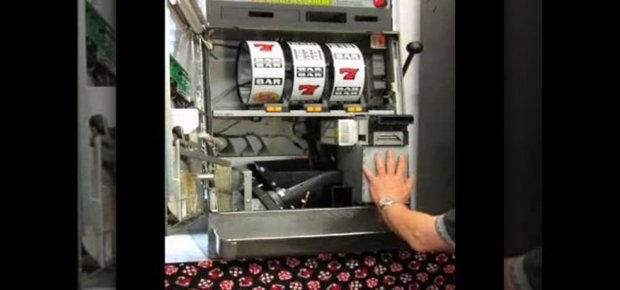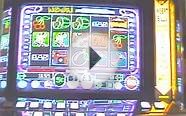
How does a slot machines work?
Originally, casinos installed slot machines as a diversion for casual gamers. Unlike traditional table games (such as blackjack or craps), slot machines don't require any gambling knowledge, and anyone can get in the game with a very small bet.
This idea proved to be a monstrous success - slot machines eventually moved off the sidelines to become the most popular and the most profitable game in town, bringing in more than 60 percent of the annual gaming profits in the United States.
The technology of slot machines has also changed a lot over the years. The classic mechanical designs have been almost completely replaced by computer-controlled machines. But the game has remained the same. The player pulls a handle to rotate a series of reels (typically three) that have pictures printed on them. Winning or losing is determined by which pictures line up with the pay line, a line in the middle of a viewing window. If each reel shows the same winning picture along the pay line, you win (certain single images are sometimes winners as well). The amount you win - the payout - depends on which pictures land along the pay line.
In this article, we'll find out what sets the reels in motion in modern slot machines as well as in the old mechanical models. We'll also see what determines the odds of winning on a slot machine and look at some popular variations on the traditional game.
The classic slot machine design works on an elaborate configuration of gears and levers. The central element is a metal shaft, which supports the reels. This shaft is connected to a handle mechanism that gets things moving. A braking system brings the spinning reels to a stop, and sensors communicate the position of the reels to the payout system. A coin detector initially registers that a coin has been inserted and unlocks a brake so the handle can move.
There are any number of ways to arrange these elements, and manufacturers have tried dozens of approaches over the years, so we'll focus on one representative design. The basic design includes three reels mounted on a central shaft. The central shaft also supports three notched discs, which are connected to the three reels. A second shaft below the central shaft supports a kicker, a piece of metal comprising three paddles. The kicker paddles are lined up so they can push against the notches on the three discs. The second shaft also supports a series of connected stoppers, teeth that lock into the notches on the discs.
The kicker and the stoppers are both connected to springs, which hold them in a standby position. The kicker is held in place behind the discs, while the stoppers are held up against the discs, locking them into place.
You might also like











 Massively multiplayer online role-playing game (MMORPG) is a genre of role-playing video games in which a very large number of players interact with one another within a virtual game world.
Massively multiplayer online role-playing game (MMORPG) is a genre of role-playing video games in which a very large number of players interact with one another within a virtual game world. An online game is a video game played over some form of computer network or on a video game console such as the Xbox 360 and Playstation 3. This almost always means the Internet or equivalent technology, but games have always used whatever technology was current: modems before the Internet, and hard wired terminals before modems. The expansion...
An online game is a video game played over some form of computer network or on a video game console such as the Xbox 360 and Playstation 3. This almost always means the Internet or equivalent technology, but games have always used whatever technology was current: modems before the Internet, and hard wired terminals before modems. The expansion...